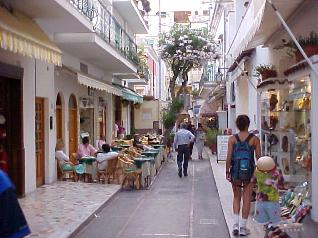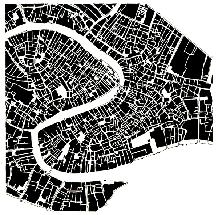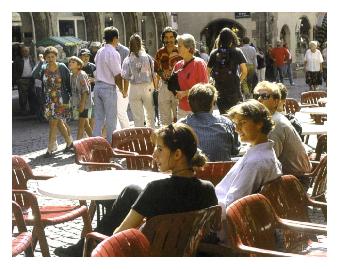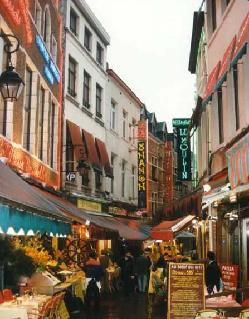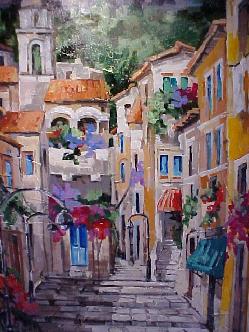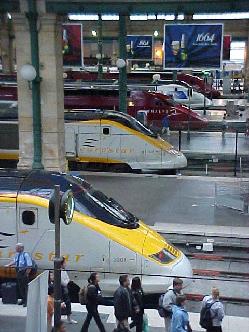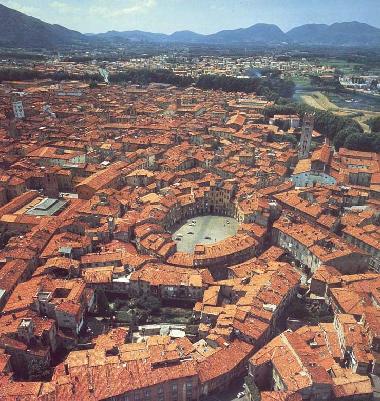Designing great places for the comfort and enjoyment of the pedestrian is one of the most important aspects of New Urbanism. Taken to the highest level of urbanism, the finest places in the world are cities with entire networks of car-free streets, known as pedestrian cities.
|
Copenhagen is another of the world’s great pedestrian cities. A recent issue of 'Metropolis' magazine talks about Copenhagen and its growing pedestrian street network. Although it’s blessed with certain inherited characteristics - such as a narrow medieval street grid - the city has worked steadily to improve the quality of its street life. In the 40 years since Copenhagen’s main street was turned into a pedestrian thoroughfare, city planners have taken numerous small steps to transform the city from a car-oriented place to a people-friendly one. “In Copenhagen, we have pioneered a method of systematically studying and recording people in the city,” says Jan Gehl, a Danish architect and co-author of ‘Public Spaces-Public Life’, a study on what makes the city’s urban spaces work. “After twenty years of research, we’ve been able to prove that these steps have created four times more public life.” Here is Copenhagen’s program for a more pedestrian-friendly city: |
|
COPENHAGEN’S 10-STEP PROGRAM 1. CONVERT STREETS INTO PEDESTRIAN THOROUGHFARES The city turned its traditional main street, Stroget, into a pedestrian thoroughfare in 1962. In succeeding decades they gradually added more pedestrian-only streets, linking them to pedestrian-priority streets, where walkers and cyclists have right-of-way but cars are allowed at low speeds. 2. REDUCE TRAFFIC AND PARKING GRADUALLY To keep traffic volume stable, the city reduced the number of cars in the city center by eliminating parking spaces at a rate of 2-3 percent per year. Between 1986 and 1996 the city eliminated about 600 spaces. 3. TURN PARKING LOTS INTO PUBLIC SQUARES The act of creating pedestrian streets freed up parking lots, enabling the city to transform them into public squares. 4. KEEP SCALE DENSE AND LOW Low-rise, densely spaced buildings allow breezes to pass over them, making the city center milder and less windy than the rest of Copenhagen. 5. HONOR THE HUMAN SCALE The city’s modest scale and street grid make walking a pleasant experience; its historic buildings, with their stoops, awnings, and doorways, provide people with impromptu places to stand and sit. 6. POPULATE THE CORE More than 6,800 residents now live in the city center. They’ve eliminated their dependence on cars, and at night their lighted windows give visiting pedestrians a feeling of safety. 7. ENCOURAGE STUDENT LIVING Students who commute to school on bicycles don’t add to traffic congestion; on the contrary, their active presence, day and night, animates the city. 8. ADAPT THE CITYSCAPE TO CHANGING SEASONS Outdoor cafes, public squares, and street performers attract thousands in the summer; skating rinks, heated benches, and gaslit heaters on street corners make winters in the city center enjoyable. 9. PROMOTE CYCLING AS A MAJOR MODE OF TRANSPORTATION The city established new bike lanes and extended existing ones. They placed bike crossings – using space freed up by the elimination of parking – near intersections. Currently 34 percent of Copenhageners who work in the city bicycle to their jobs. 10. MAKE BICYCLES AVAILABLE The city introduced the City Bike system in 1995, which allows anyone to borrow a bike from stands around the city for a small coin deposit. When finished, they simply leave them at any one of the 110 bike stands located around the city center and their money is refunded. For more information, check out New City Spaces by Jan Gehl |
-------------------------------------------------------------------------------------------------------------------------------------------------------------------------------------- "The invention of the city was a spiritual and technical achievement the historical significance of which surpassed by far the discovery of fire or the invention of the wheel." -Leon Krier -------------------------------------------------------------------------------------------------------------------------------------------------------------------------------------- |
| quality of life New Urbanism is creating and restoring walkable, diverse, compact towns and cities that enable a higher quality of life by offering new choices for living. PEDESTRIAN FRIENDLY URBAN PLACES This is the highest quality environment possible for living. It includes a full range of services within a 5-10 minute walk of every residence. At minimumm, this would include grocery stores, deli's, bakeries, newsstands, coffeehouses, vegetable stands, open-air markets, personal services, parks, and green spaces. A full range of entertainment and cultural activities are also desirable, all in an attractive, friendly atmosphere. European cities are some of the finest examples of pedestrian friendly living forms. Venice is the best example of this because cars were never allowed to enter the city - the entire city is composed of all pedestrian streets. Venice also has the most complete, most varied and beautiful continuous urban fabric. Each neighborhood has its own central square or campo that acts as it's heart and soul. These are within walking distance of all the residents, and offer a full range of services as well as social interactions. CITIES AND TOWNS AS WORKS OF ART The combination of beautiful architecture with great urbanism creates the most beautiful places to live, places that express a life of richness and tradition, and act as a comfortable stage for the drama of life. PLACES FREE FROM DANGER AND TOXINS An environment offering a high quality of life is a place free from noise, pollution, toxins, radiation, and danger. This includes safe streets everyone can walk along, clean air to breathe, clean and healthy water and food. A SAFE, COMFORTABLE, AND EFFICIENT TRANSPORTATION SYSTEM An integral part of a high quality environment is a quality transportation system that everyone can use to easily get around locally and regionally. Read about the many benefits of trains Read about High Speed Rail |
| |||
| ||||
|
| |
|
